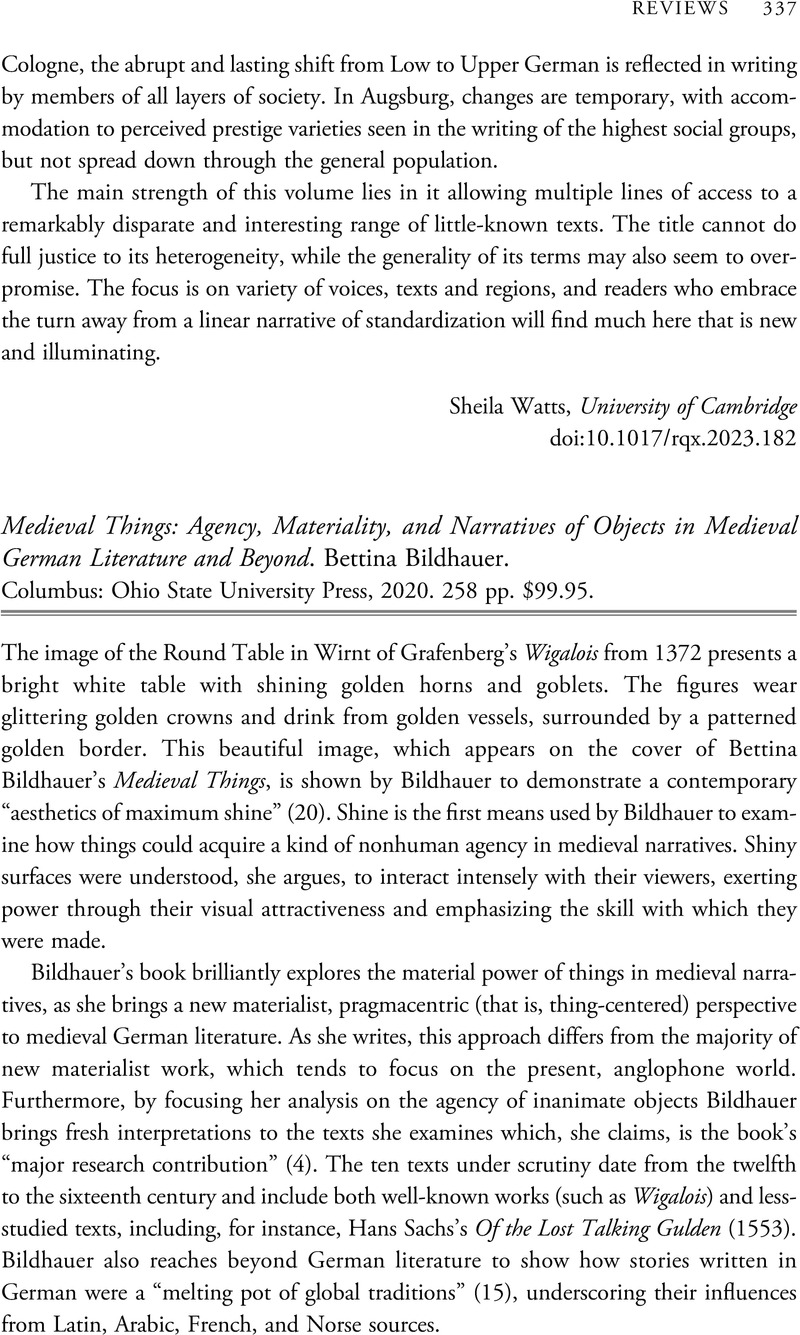No CrossRef data available.
Article contents
Medieval Things: Agency, Materiality, and Narratives of Objects in Medieval German Literature and Beyond. Bettina Bildhauer. Columbus: Ohio State University Press, 2020. 258 pp. $99.95.
Review products
Medieval Things: Agency, Materiality, and Narratives of Objects in Medieval German Literature and Beyond. Bettina Bildhauer. Columbus: Ohio State University Press, 2020. 258 pp. $99.95.
Published online by Cambridge University Press: 17 April 2023
Abstract
An abstract is not available for this content so a preview has been provided. Please use the Get access link above for information on how to access this content.

- Type
- Review
- Information
- Copyright
- Copyright © The Author(s), 2023. Published by the Renaissance Society of America



